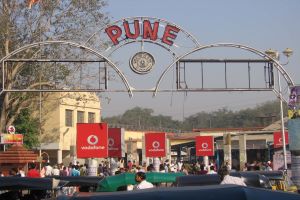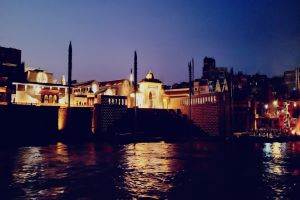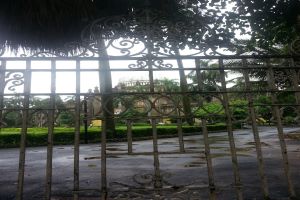Note: This post was originally published on June 6th, 2013.
Hello Monsoon Season
The Indian Monsoon is a beautiful and incredible phenomenon. Without experiencing it and its full grip, one hasn’t lived. Let me explain– Throughout the majority of the calendar year, Indian weather is a source of envy for many individuals living abroad in the American Midwest. Temperatures hover around a pleasant 60-70 degrees. Days are warm and sunny, but not scorching, save for the occasional minute shower.
Then, around May 1st, the temperature soars, and clouds disappear for what seems like eons. Throughout May, the blazing heat trails on, seeming to gain momentum, until, finally, on the brink, the clouds give way, and bangs of thunder resound throughout the skies- shaking the city with its vibrancy and strength. The sounds of thunder- signs from God, according to some- represent a break from the incessant heat, into a cooler, calmer paradise/oasis. The coming of the monsoon has manifested into the Indian culture. It’s a celebration, but a significant marker, nonetheless, for it signifies the end of a season- perhaps, you could say, an era.
The first thunder of the monsoon season is a magical moment, because it reminds people that the rains are coming. Children find joy in playing in the water. Their definition of the rainy season is an opportunity to finally become drenched- from head to toe- in muddy puddles, play for hours throughout the society (neighborhood), and honestly, just be a kid. From an adult’s perspective, I view it as a sign of hope, for anything in life. The coming of the monsoon is awaited as a retreat from the scorching sun the month-and-a-half before. This is why it is such a universally awaited throughout India, and why anyone from children to adults find excitement and joy in the transition.
I’ve recently experienced this moment. It’s June 6th. Historically, the rains begin much later in the month of June, so the initial rolls of thunder were unanticipated this afternoon. Nonetheless, I could feel the atmosphere of joy and excitement at IISER today. Even in the lab, we all experienced a common understanding of each other. Happiness truly draws people together, and the coming of the rains provided this emotion, and clearly brought us all on the same level.
The transition from summer to the rainy season can theoretically be a challenging change to deal with. My trip to India has similarly faced a rocky transition- both culturally and professionally.
The First Week in India
The past week has been an interesting one, because I’ve experienced so much, in so little time- as you can see. Before I share more of my experiences, here are a few pictures- at least the ones I’ve managed to take so far, which is not enough. My goal for next week: take more pics!

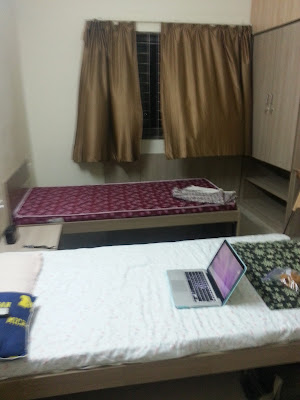

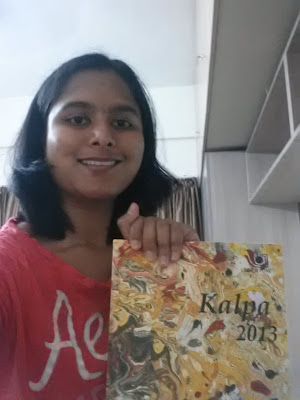
That’s pretty much all the pictures I have for now…more to come (especially in Warje, a suburb of Pune where my grandparents are from, and whom I will visit again next weekend!)
Comparing India vs. USA
Anyway, the past week has been nothing short of exciting, but also quite challenging, as well. Even something as simple as laundry- has been different from in the states. Despite the differences, I’m slowly becoming accustomed to my life as an exchange research intern at IISER, and growing to love my new home. Though I have always loved Pune, having visited often throughout my child/teen-hood, this time is quite different, as I’ve never really been exposed to an academic environment in India. It truly has been valuable learning about the subtle unique aspects of an Indian lab that distinguish it from American facilities.
Beginning of Lab Work
My lab work is going well, too. After the chemical biology conference last Monday/Tuesday, my direct supervisors/mentors Vishakha and Sonashree, both Ph.D.’s in chemistry, gave me a few readings to familiarize myself with the lab goals and topics. Mostly, these have been literature reviews and past publications, presentations and papers on raman spectroscopy, a light-scattering/optical instrument/technology which can be used to obtain high-quality images of biological molecules.
On the second or third day, another Ph.D. student in the lab, Arya, gave me a tour of the raman spectroscope, and other important technologies in the back area of the lab. I have been extremely impressed by the modern facilities in the lab so far! (PICS to come) It’s truly a world-class university. For instance, the machines and instruments in the wet lab are all visibly new/modern. It is quite impressive.
The lab set up, however, is quite different. Although I’ve never worked in a bio photonics lab before, I’ve never really been exposed to a lab where the computing facilities and wet lab area are physically separated by a wall. (Not sure if this was intentional).
Another thing I’ve been doing this past week has been attending lab group meetings (there have been 2 so far). Lab group meetings are an hour each week where 1-2 lab members give presentations on their projects. This week’s was especially interesting, as Sonashree, the member I will work closely with throughout the summer, gave her presentation on HGPRT. The topic of this project is investigating/characterizing the structure and transition state time scale of the enzymatic pathway involving HGPRT. This is an enzyme that catalyzes hypoxanthine, guanine and xanthine in humans and parasites which cause malaria and gout, among other diseases. The broader goal of the research, as per my understanding thus far, is to use an understanding of the chemical structure of HGPRT, and inhibitors which can “freeze” the transition state from the enzyme-substrate to enzyme-product complex, to fully study it, and to facilitate drug development for diseases such as gout, malaria or lesch-nyhan syndrome.
Now that I’m getting more accustomed to the jargon/terminology of the field, I’m looking forward to beginning experiments soon!
Visiting my Grandparents in Warje Malwadi
Anyway, this past weekend, I also got a chance to visit my grandparents, who live in Dnyanesh Society, Warje, a suburb of Pune.
The demographic in Dnyanesh society consists of a majority of young people (teens), children and aged folk: two extremes on the age scale. Despite this, it appears like a blended city. I’ve often- during every visit to India, in fact- reflected on the dynamic of communities in India, and how they compare to communities abroad, in the Midwest, for instance. Culture and class structure certainly play major roles in how people interact within Hindu societies. For one thing, India is significantly (80%) Hindu, and most people share a common heritage and culture, binding them together on a different level.
An equally significant contributing factor is the climate: tropical societies often spend a significant time outdoors due to the warm weather. This unites many individuals who otherwise would not meet and automatically presents a location to play, meet or just talk. The final element is the historical backdrop in Indian culture which, perhaps not actively/ vocally, but engraved within the cultural norms, emphasizes community, and fosters strong relationship development early in life, facilitated by the neighborhood and family structure.
Aaji’s (Grandma’s) community is a perfect representation of this dynamic- as are most neighborhoods throughout India (that I’ve seen). The unique part of her neighborhood is that the combination of extremely varying age groups create an even exceptional community, where kids learn to help the elderly (living amongst them) in addition to playing with other kids. In turn, I find this concept, of neighborhood structure and dynamics, fascinating, especially as it relates to India’s regions.
Next weekend, I’m looking forward to visiting my uncle and grandparents again. Gotta love the family!
Happy Start-of-Monsoon Season! 🙂 Until later!


